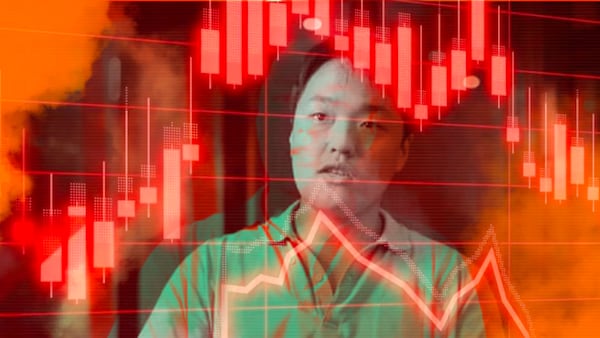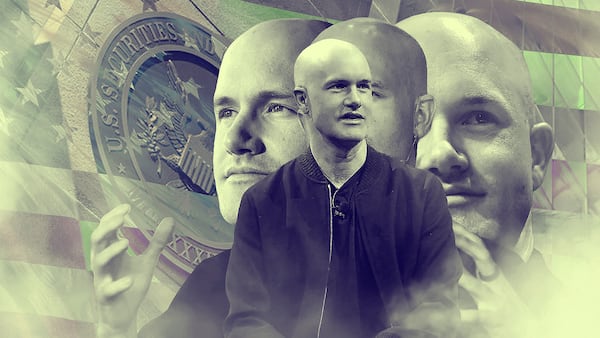- Analysis from Unchained Capital shows investors holding BTC for more than five years did not lose money.
- Bitcoin halving triggers bull and bear cycles and predictable patterns in volatile asset.
The hodlrs are right after all.
For all the ups and downs in Bitcoin’s price one constant prevails — it consistently delivers net gains to investors who hold, or hodl in crypto parlance, the token for at least five years, according to analysis by Unchained Capital, a financial services firm.
Patient investors multiplied their returns 1,000 times on a mean-adjusted basis over six to seven years, Unchained Capital said in a report entitled “HODL Cave” and released this week. The study also found that no investors who held BTC five years lost money.
In contrast, the mean return for investors holding BTC for two years could multiply 23 times but there was a slim chance they might lose half their initial investment.
“For bitcoin detractors, this massive historical appreciation in value is the hardest fact about Bitcoin to explain away,” said the report’s authors, who analysed BTC returns over a 13-year period.
The power of halving
At first glance, it may seem obvious that holding an asset for a long time will eventually pay off. Yet unlike most other cryptocurrencies, Bitcoin automatically regulates its scarcity in a way that directly impacts its valuation. It’s called halving, and it has provided a key means for investors to anticipate the bull and bear cycles in Bitcoin.
Hardcoded into Bitcoin by its pseudonymous creator Satoshi Nakamoto, halving reduces the number of newly minted tokens by 50% every four years. This means miners tending the Bitcoin blockchain must compete for fewer tokens as a reward for their efforts. It also means the price of Bitcoin predictably goes up as supply diminishes.
NOW READ: Arbitrum just came to a sudden halt — it ran out of money for gas
Throughout its history, the price of Bitcoin has set a new all-time high between 12 and 18 months after each halving event. The last halving was in 2020 and the next one will happen in 2024. Over the last three years, Bitcoin has swung from a low of $5,000 to an all-time high of about $65,000, and settled back again to $26,434, which is where it was trading on Thursday.
As a result, halving has become a trigger for a bull market in Bitcoin and in the crypto market as a whole given the token’s dominance. Bitcoin accounts for 44.7% of the cryptocurrency market’s total capitalisation, according to CoinGecko.
Hodling becomes a thing
Even so, Bitcoin has crashed after every all-time high. This decline is then followed by a choppy period of sideways price action that gives way to another bull run after the next halving.
Investing in Bitcoin may be a white knuckle ride, but now, with more than a decade of data to examine, a clear pattern is emerging that may embolden even more hodling.
Hodling has become a badge of honour among investors who sit on their positions even when it looks like the bottom is falling out of the market.
Hodling became a thing back in 2013 when GameKyuubi, the pseudonymous member of the Bitcointalk forum, coined the term as a deliberate typographical error. “I am hodling,” he said in December 2013.
Now hodling has become a badge of honour among investors who sit on their positions even when it looks like the bottom is falling out of the market, as it did last November when FTX failed and Bitcoin lost more than a quarter of its value in four days.
NOW READ: How Coinbase’s SEC woes clobber its earnings outlook
Funny enough, GameKyuubi is promoting the same idea long championed by Warren Buffett, the billionaire investing legend, who has long advised buying the S&P 500 Index and holding it forever.
But of course, being a short-term investor in Bitcoin is a very different trip than holding the top 500 stocks in the US. Investors who bought BTC in 2021 have had to stomach a vertiginous risk-reward ratio as the market is whipsawed by regulatory action against Coinbase, Binance, and Genesis. Still, BTC is up 59% this year.
Buy and forget
Unchained Capital’s analysts also weighed the human factor in their report. The simple fact is that investors who sit on their positions for longer time-frames tend to become less likely to sell. They get comfortable hodling BTC the same way Buffett is comfy sitting on his stocks decade after decade.
“The biggest reason that exiting a decade-long bitcoin position for massive returns is a fantasy is that investors who have actually held bitcoin for a decade or more no longer think about exiting Bitcoin,” the authors said.
Call it inertia or buy-and-forget or hodling. Whatever the label, the data show the approach delivers for investors who play the long game.
Have tips about Bitcoin or other cryptocurrencies? Contact the author at osato@dlnews.com.



